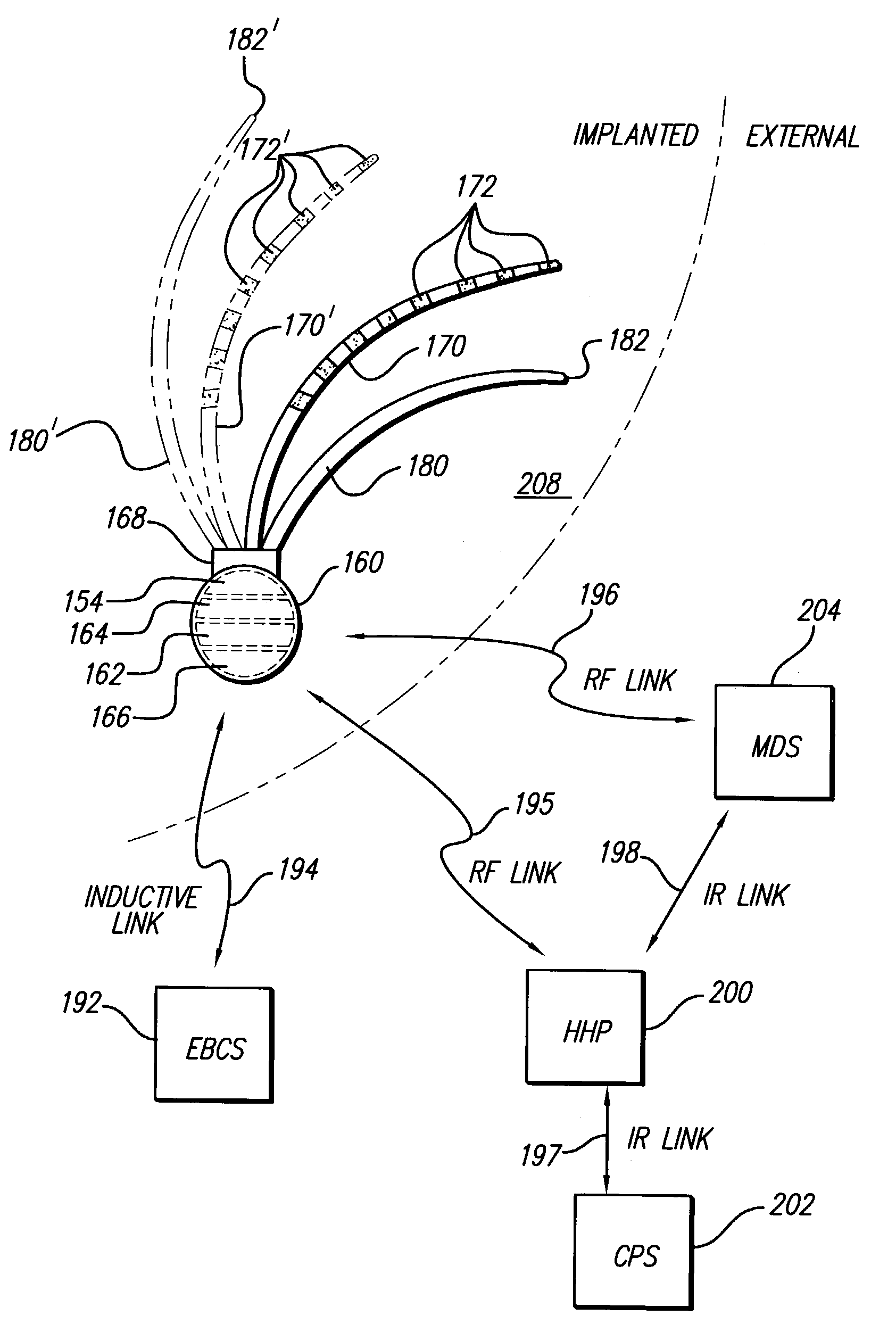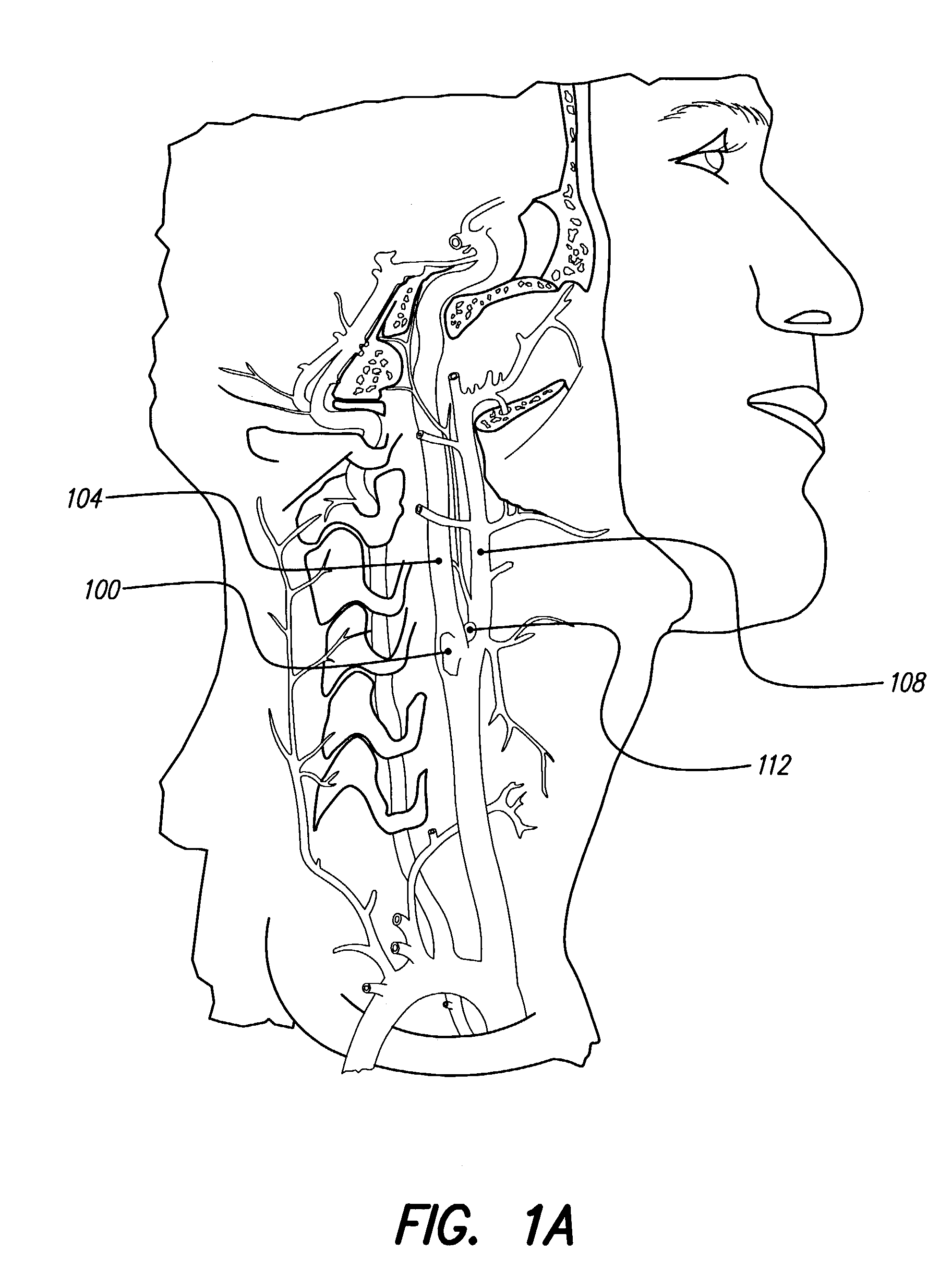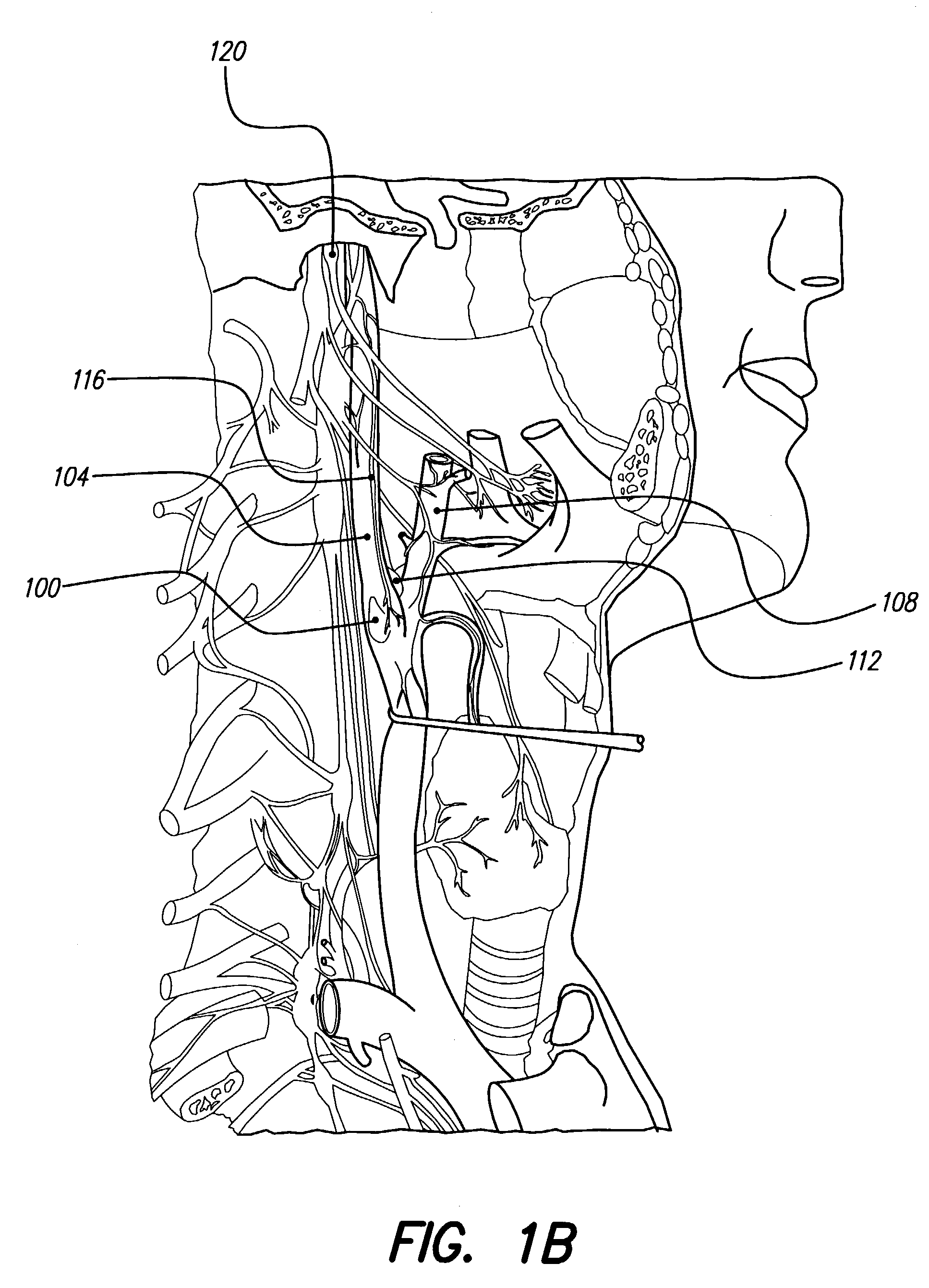Treatment of hypertension
a technology of hypertension and electrical stimulation, applied in the field of treatment of hypertension, can solve the problems of enlargement and damage of the heart, blood exerting excessive pressure on the vessel wall, and the heart working harder to maintain the blood flow against this increased resistance, so as to free the patient from reliance on rf
- Summary
- Abstract
- Description
- Claims
- Application Information
AI Technical Summary
Benefits of technology
Problems solved by technology
Method used
Image
Examples
Embodiment Construction
[0057]The following description is of the best mode presently contemplated for carrying out the invention. This description is not to be taken in a limiting sense, but is made merely for the purpose of describing the general principles of the invention. The scope of the invention should be determined with reference to the claims.
[0058]FIGS. 1A, 1B, and 2 depict arteries, nerves, and other structures in the head and neck area. The carotid sinus 100 is a dilated area located at the bifurcations of the carotid arteries 104 and 108. Carotid sinus 100 contains numerous baroreceptors that help control blood pressure by mediating changes in heart rate. The carotid body 112 is a chemoreceptor located near the bifurcations of carotid arteries 104 and 108. Carotid body 112 monitors changes in the oxygen content of the blood and helps control respiratory activity. In most people, the baroreceptors increase their rate of firing in response to increased blood pressure, and this leads to a decrea...
PUM
 Login to View More
Login to View More Abstract
Description
Claims
Application Information
 Login to View More
Login to View More - R&D
- Intellectual Property
- Life Sciences
- Materials
- Tech Scout
- Unparalleled Data Quality
- Higher Quality Content
- 60% Fewer Hallucinations
Browse by: Latest US Patents, China's latest patents, Technical Efficacy Thesaurus, Application Domain, Technology Topic, Popular Technical Reports.
© 2025 PatSnap. All rights reserved.Legal|Privacy policy|Modern Slavery Act Transparency Statement|Sitemap|About US| Contact US: help@patsnap.com



